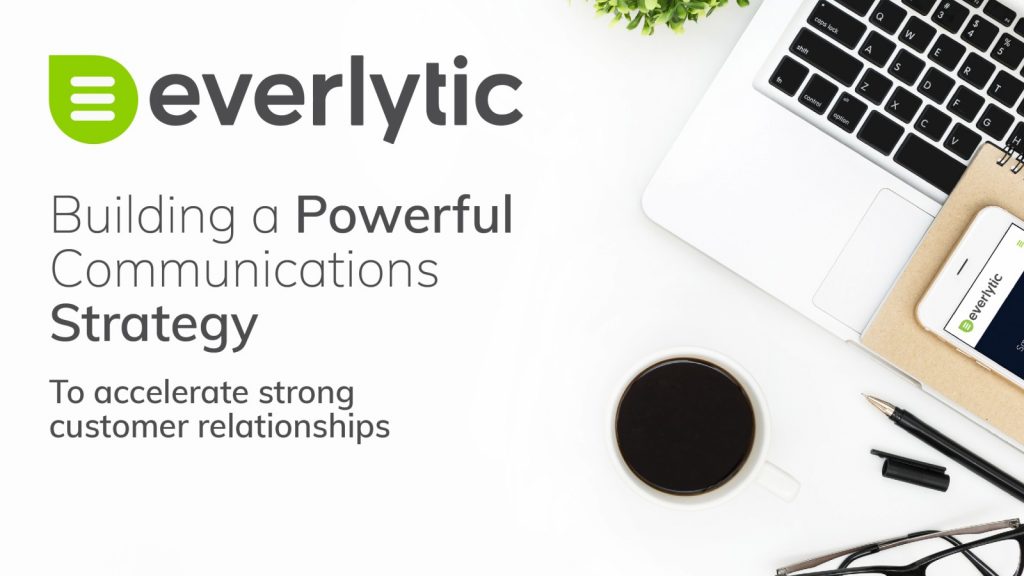OpenAI has launched GPT 5.2, a major model upgrade now available in both the API and ChatGPT. It is described as the company’s most…
Building a powerful communications strategy to accelerate strong customer relationships [Sponsored]

Never has it been more important to consistently and authentically communicate with your customers if you want to build strong business relationships with them. It’s not as simple as just sending an email though. Deep, meaningful relationships are built on trust, and trust is the result of a consistent message that delivers on each customer’s interests, needs and challenges.
Here are 8 key points to keep in mind when building a powerful communications strategy:
1. Exceed expectations
Too many companies over-promise and under-deliver. In some cases, this is because of misalignment within the organisation. Sales and marketing promise one thing, but the production team that needs to deliver on the promise is either unaware of what’s been guaranteed or knows it’s not possible. Alternatively, businesses make promises simply to close the deal, even if they know they can’t deliver.
Since the best customer is a repeat customer, this is a poor strategy. Instead, in all your communications, stick to the cliché of ‘Under promise, and over deliver’. A customer who is expecting a solution in three weeks but receives it in seven days will be delighted. A customer expecting a solution in seven days but receiving it in nine days will be dissatisfied and unlikely to buy from you again.
Alternatively, if you use SMS or email to keep your customers apprised of the progress of their orders, ensure your operations are flawless.
2. Ask for feedback
Communication channels shouldn’t be a one-way push. Invite customer feedback or questions to show them you care and are listening. Customer feedback is also an excellent way to gather valuable data that you can use to hone your understanding of each customer’s specific needs, helping you find the best solutions to fit their challenges. The better you can do this, the more your business will grow.
It’s key to listen carefully to comments and respond promptly, whether you’ve received a compliment or a complaint. This is because receiving negative feedback can also be changed to a positive experience if you respond quickly and decisively. Many of a business’s most loyal customers started out disgruntled but were converted because of how well their problem was addressed.
3. Stay connected
In an Inc article, serial entrepreneur and author of, Andrew Griffiths, shared this story:
I had a lawyer for many years who taught me a lot about engaging with clients. Every month or so I would receive a letter with an article that was very relevant to me, ripped out of a magazine or newspaper, along with a personal note from my lawyer, saying something along the lines of ‘I saw this and thought of you, hope you find it interesting and helpful. Cheers’ – Tom.
The lesson is a simple one: Andrew Griffiths felt valued as a client. He appreciated that his lawyer took the time to find content that was valuable to him, and that he understood Andrew’s business well enough to know what was relevant in the first place.
Today, technology has made it far easier than ever to connect with your customers. Instead of cutting out and posting articles, you can reach thousands of people at the click of a button. But there are some rules to building meaningful connections.
- Be genuinely interested in your customers. Take the time to get to know them before you send any communications.
- Connect in positive ways by sharing valuable, customer-centric insights, advice, and solutions with your customer base.
- Know what communication channels your customers are using so you can engage them where they are most comfortable.
How you connect marks the difference between successfully building relationships – or failing to do so.
4. Focus beyond the sale
You can absolutely share relevant deals, specials, and solutions with your customer base, but only once you know what’s relevant to them specifically, and after you’ve built a relationship with them. If you’re only making contact to sell something, you’re far less likely to achieve the success you’re looking for.
Offer real value in your communications and you’re creating a long-term relationship with a customer who looks forward to hearing from you.
5. Follow up offline
Great marketers study their customers. They understand them. Through careful research they determine why their customers love them and what it is about their offerings that customers respond to.
To do this, data needs to be collected and real, follow-up conversations need to happen with customers. Typically, it’s the sales department that’s having those conversations – which is why it’s so important for sales and marketing to be on the same page, working together and sharing their insights.
Consider this: When you discover why your customers say “yes” to you or your competitors, you have the knowledge you need to adapt, generate results, and build sustainable growth in your market.
6. Don’t spam people
Too often, brands scare off followers and email subscribers by simply being too spammy. Rather than overwhelming consumers with marketing information, focus on providing interesting or useful information. Followers will naturally want to learn more about your brand if they find your content interesting.
Email inboxes are flooded with a barrage of emails and newsletters. If you want yours to stand out, it needs to be so good that your customers don’t only read it, they share it as well.
7. Customers are people
This sounds obvious (since your customers are people), but when you’re communicating with them digitally, it’s surprisingly easy to forget.
Even if you’re sending thousands of emails or SMSs, ensure each one is personalised. First names are important, but so is segmenting your database into separate audiences. If you have customers in the Agri and health sectors, for example, send two different mailers. If, within your Agri sector, you have maize and cattle farmers – send them separate vertical-specific mailers. The more personalised the better.
A Dynamic Content feature expands on this, enabling you to create one email with different dynamic sections. This means you can show different content to different segments of your database, without creating multiple different emails. When sending emails in bulk, the goal is to be as personalised as possible, while still creating one template that can reach thousands of users.
The right tools can help you achieve this.
8. Align your goals with customer needs
Your goal isn’t to send an email – it’s for someone to read it and engage with your brand and business. To achieve this, you need to understand what your customers are looking for. For instance:
- Do your customers want daily updates and deals?
- Are they looking for insightful content that will help them achieve success for themselves or their businesses?
- Have they signed up for a service but require valuable information to make the most of their sign-up?
If you know what your customer is looking for, you can provide the best content that addresses their needs, which will, in turn, keep the communication channels between them and your business open.
Building better business relationships
These are all areas you should consider when building your communication strategy. You’re a guest in your customer’s inbox or on their phone – make sure you’re a welcome guest.
To understand how these 8 key points can be used in a larger communication strategy that helps you build stronger relationships with your customers, download our free white paper: Smart Customer Engagement: How to Build Meaningful Business Relationships Through Personalised Messaging.
This article is sponsored by Everlytic.
Feature image: supplied, Everlytic

